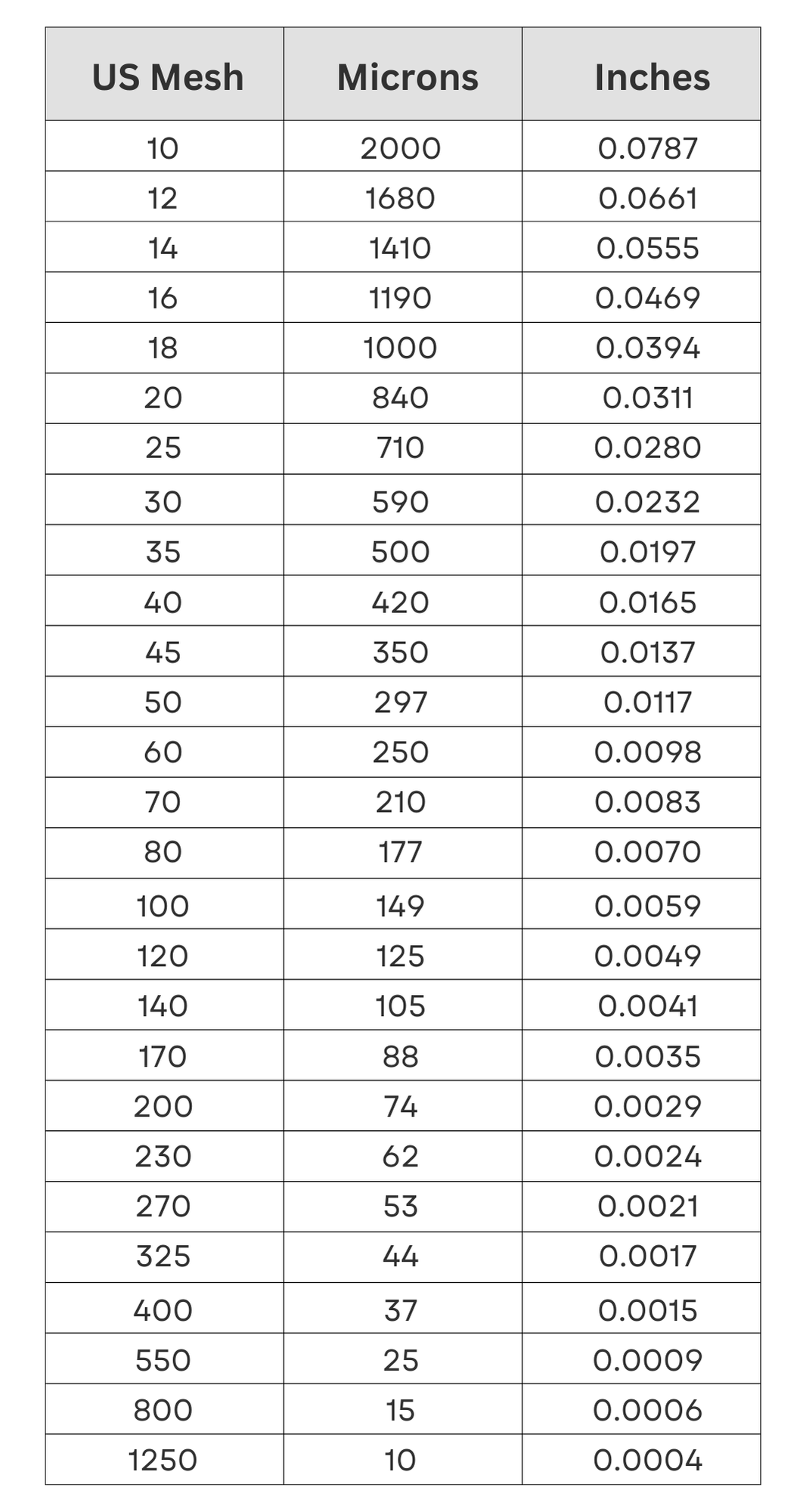US Mesh vs. Micron
This chart roughly converts between US mesh, microns, and fractions of an inch
UNDERSTANDING MICRON AND MESH RATINGS
When it comes to liquid filtration, understanding the difference between micron and mesh ratings is key to choosing the right filter for your needs. While both units of measurement describe a filter's ability to capture particles, they do so in different ways.
Micron Ratings
A micron, also known as a micrometer (μm), is a unit of length equal to one-millionth of a meter. To put that into perspective, there are 25,400 microns in one inch.
In liquid filtration, the micron rating is a precise measure of a filter's efficiency. A filter's micron rating indicates its ability to capture particles of a certain size. The smaller the micron rating, the more effective the filter is at removing microscopic contaminants. For instance, a 1-micron filter can trap particles that are one-millionth of a meter in size, whereas a 25-micron filter would allow those same particles to pass through.
Mesh Ratings
Mesh size refers to the number of openings per linear inch in a woven screen. This rating is commonly used for screens and media woven from monofilament fabrics. Unlike micron ratings, mesh size is inversely related to particle size.
This can be a bit confusing at first: a larger mesh number means a greater number of openings per inch, which in turn means the openings are smaller. This allows only the smallest particles to pass through. Conversely, a smaller mesh number indicates fewer, larger openings per inch, allowing larger particles to pass through.
It's important to note that mesh ratings are not always as precise as micron ratings because they are also dependent on the diameter of the wire or thread used to create the mesh.
A micron is one millionth of a meter (0.00003937 inches.)
By contrast, a human hair is about 100 microns in diameter.
MESH VS. MICRONS CHART

